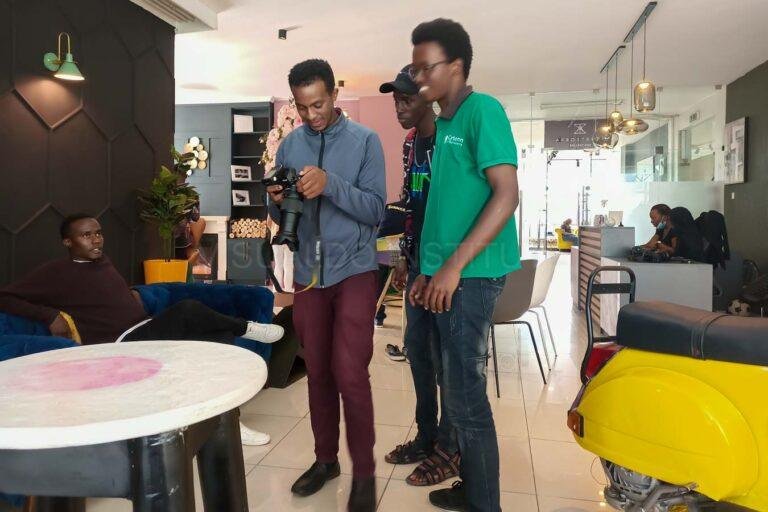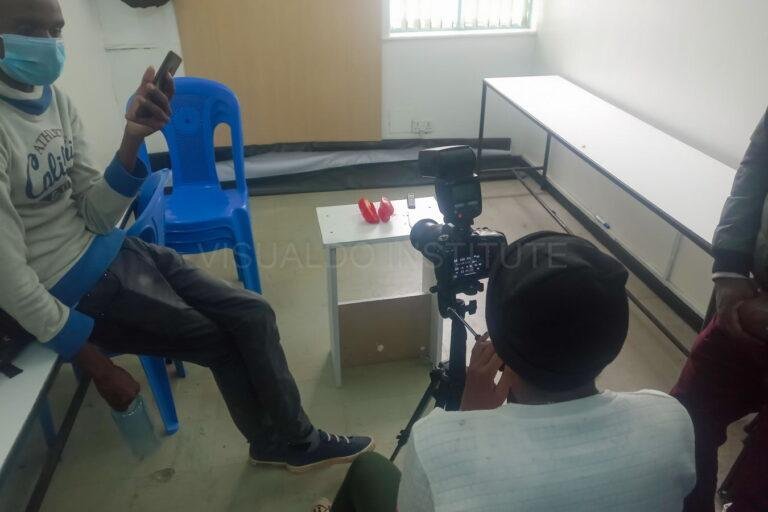Diploma in Photography in Nairobi Kenya Photography School
1 Jul 2025 - Our diploma in photography allows you to specialize in any genres of photography; studios, events, weddings, sports and wildlife. We are the best photography school in Nairobi, Kenya.
The Best School for Diploma in Photography in Kenya is Visualdo
Visualdo stands out as the best photography school for studying diploma in photography due to its comprehensive and practical approach to creativity in photography. Located in Nairobi, Kenya, the school’s broad curriculum, which includes courses in adobe photoshop, lightroom, videography, graphic design, digital marketing and web design, ensures students become professional photographers.
About Diploma in Photography course at Visualdo. Best Photography Diploma Course in Kenya
A Diploma in Photography is a comprehensive program designed to equip students with both creative and technical skills necessary for a fulltime career in professional photography. Our program lasts 1 year and focuses on developing practical skills and theoretical knowledge.
Here’s an overview of what it usually covers:
Key Areas of Study:
- Basic & Advanced units
- Advanced Flash Photography
- Resolution and Quality
- Light Modifiers & Metering
- More Advanced Photoshop
- Portrait Photography & Studio Photography
- Photography Genres (Wildlife, Sports, Events,
Landscape, Product) - Photography Softwares
- Graphic Design
- Video Editing
- Digital Marketing
- Photography Business
Skills Developed:
- Technical Proficiency: Mastering camera settings (aperture, shutter speed, ISO), lighting techniques, and digital editing tools.
- Creativity and Innovation: Developing a unique style and eye for detail.
- Portfolio Building: Creating a professional portfolio to showcase work for future employment or freelance opportunities.
This diploma is suitable for aspiring photographers who want to pursue a career in photography or enhance their existing skills with formal training.
⇒ How long is diploma in photography course?
⇒ Diploma in photography fee structure
Fees: Photography Fee Structure and Particulars
How much it cost to study diploma in photography in Kenya at Visualdo.
- Intakes: January, April, July, October
- Duration of study: 4 months
- Fees: Ksh12,000 per month
- Grade: Past units
Class Requirements:
What are the requirements for diploma in photography classes?
Students are required to have the following items in the photography class.
- SD Card (32gb or more)
- Card Reader
- At least 1TB Hard disk
- At least a Laptop (Core i5 and above, 12GB RAM)
- A Camera (optional)
– For Photography (Nikon D7500, Nikon D750, Nikon D810, Canon 90D, Nikon Z7, Canon 6D M2, Canon R)
– For Videography & Film (Canon 90D, Canon C100, Canon 5D M4, Sony PXW-Z150 4K XDCAM)
You can purchase a camera from this shop
Robeez Electronics
0724 643 342
Location: 5C, Midplaza Building,
Kirinyaga Road ,Nairobi
Website: robeezelectronics.com
School Requirements
- Pay Non-refundable Application Fees of Ksh2000.
- Fill and Submit Application Form.
- Bring two Passport size photos.
- Copy of National ID or Passport (or waitlist, or recommendation letter).
- Copy of KCSE result slip. D- for certificate and C- for diploma.
- No grade is required for enrollment into short courses.
- Get admission letter from us stating you have been accepted to study at Visualdo Institute
- Pay school fees installment before start of class. (Maximum of 2 installments are recommended)
- Send payment confirmation to +254-798-325-330 (Accounts) via WhatsApp or SMS.
- Learning Mode: Physical Learning, 3-5 days a week, 2-4 hours a day
Testimonials from our Photography Students
Our graduates in Photography Course have excel in the photography industry and have established their photography businesses and careers after completing their studies at Visualdo. Watch the videos below.

Reema
Studied diploma in photography at Visualdo. Check out her work at IG: reema_prish
George
Studied diploma in photography at Visualdo. Check out his work at IG: yourboygee_1
Yasmin
Studied diploma in photography at Visualdo. Check out her work at IG: photogrpher_yasmin
CONCLUSION: Visualdo Institute is a great college for photography students to learn diploma in photography courses.
Diploma in Photography in Kenya focusing on essential skills like camera work, lighting, and digital editing. It provides hands-on learning with access to professional equipment and experienced instructors. Visualdo emphasizes portfolio development, networking, and real-world experience through internships, preparing students for successful and fulltime careers in photography.
Why Visualdo is Kenya’s Top School for a Diploma in Photography:
- Comprehensive Curriculum: Covers all essential photography skills like camera work, lighting, and editing.
- Hands-on Experience: Provides practical learning with real-world projects and professional-grade equipment.
- Expert Instructors: Industry professionals offer up-to-date techniques and guidance.
- Portfolio Development: Helps students build a strong portfolio for job opportunities.
- Flexible Learning: Offers part-time and full-time options to suit different schedules.
- Industry Connections: Provides networking and internship opportunities for real-world exposure.
These factors make Visualdo a top choice for aspiring photographers pursuing a diploma in photography.













